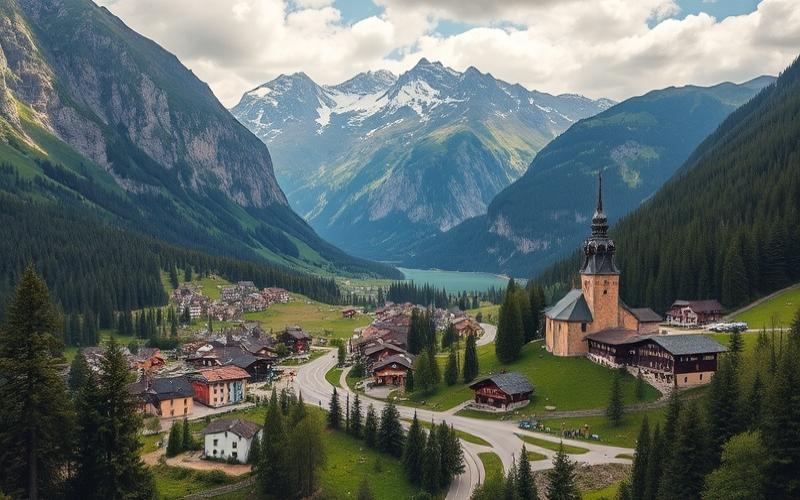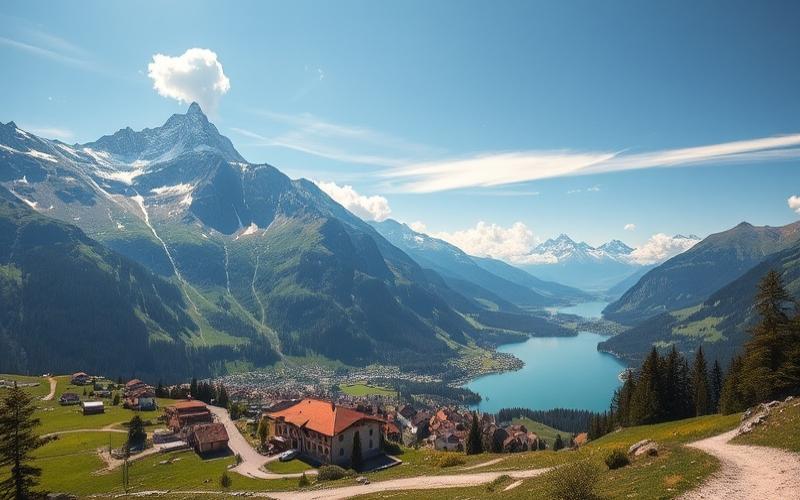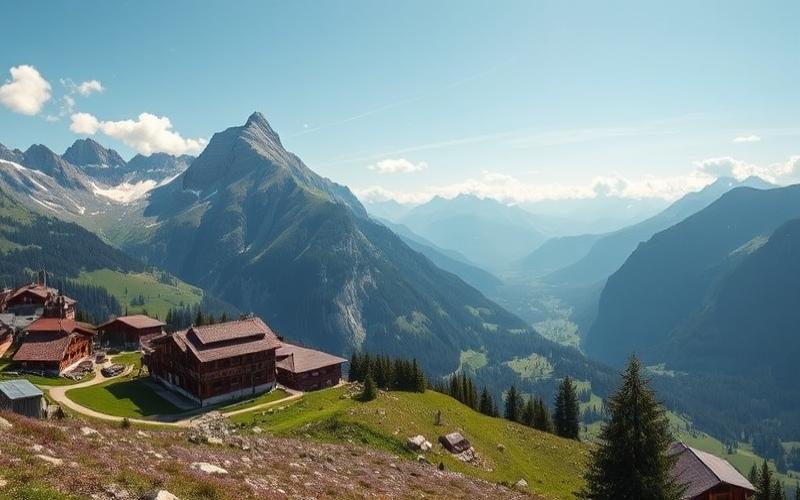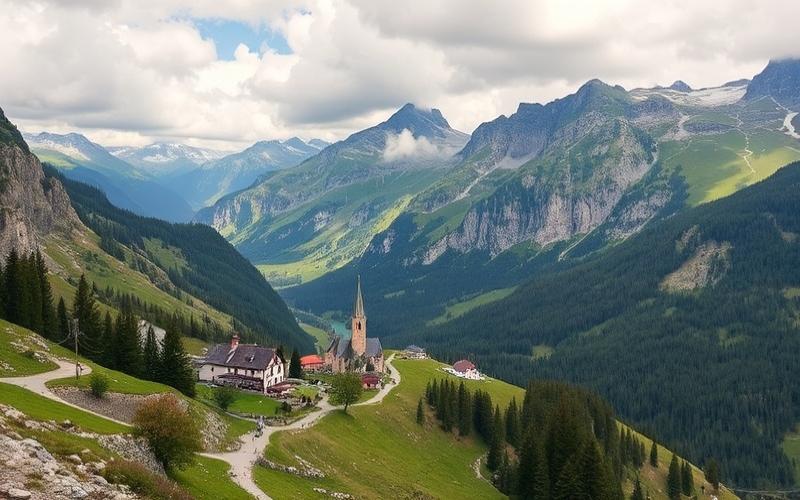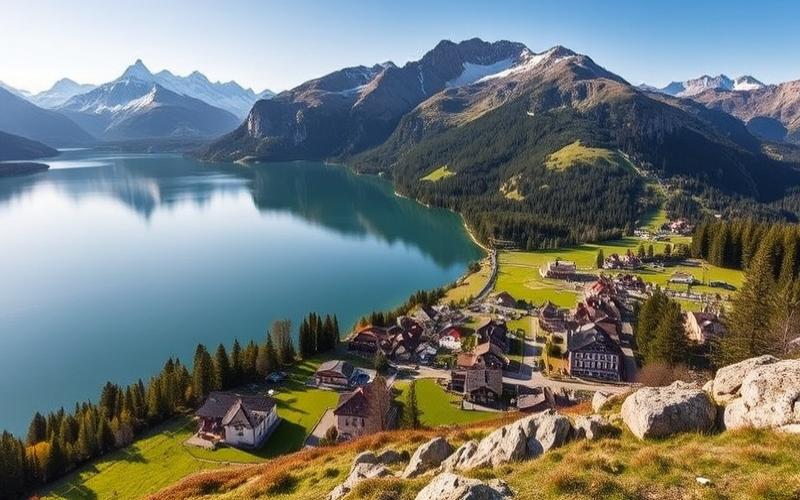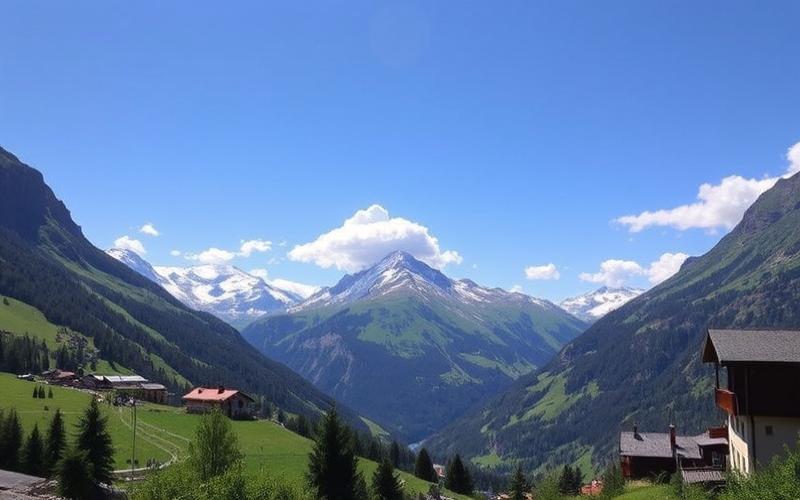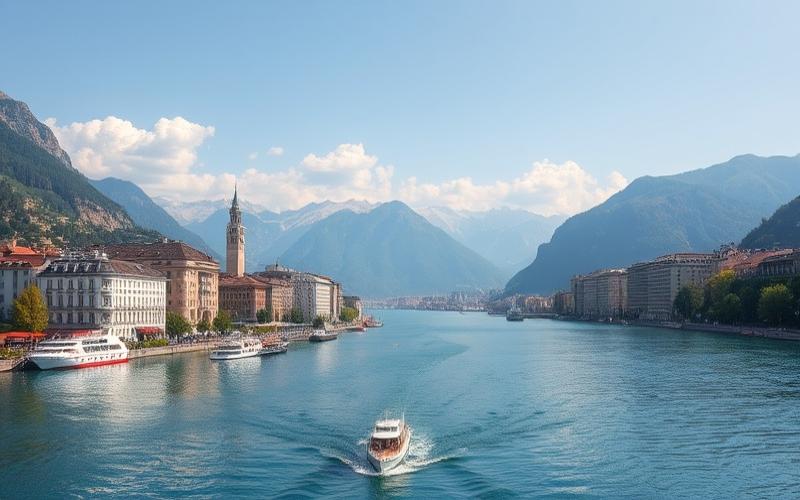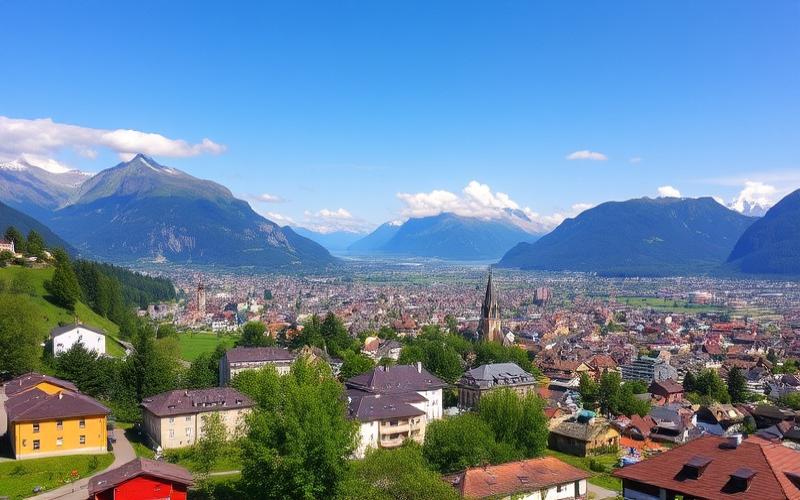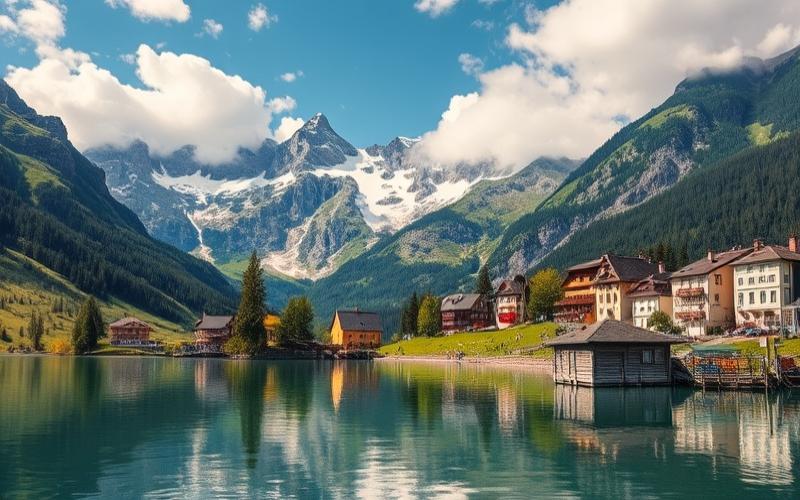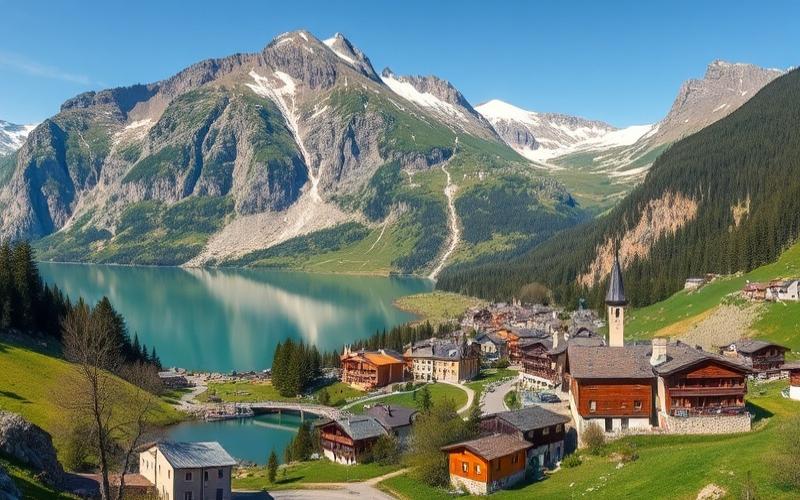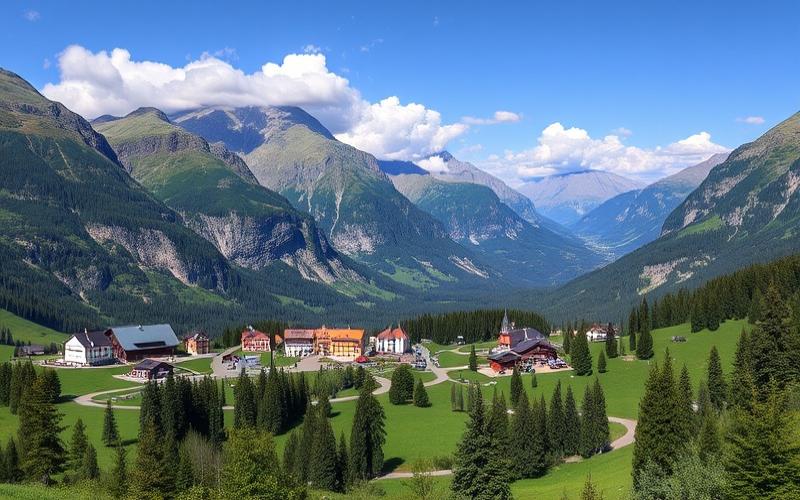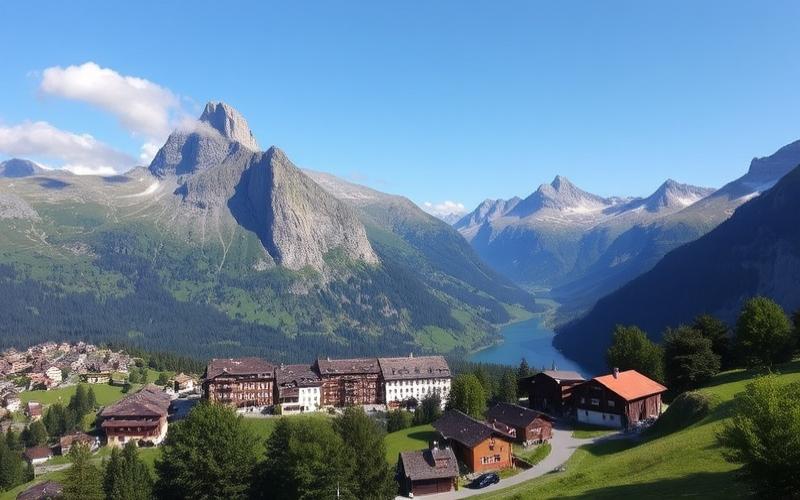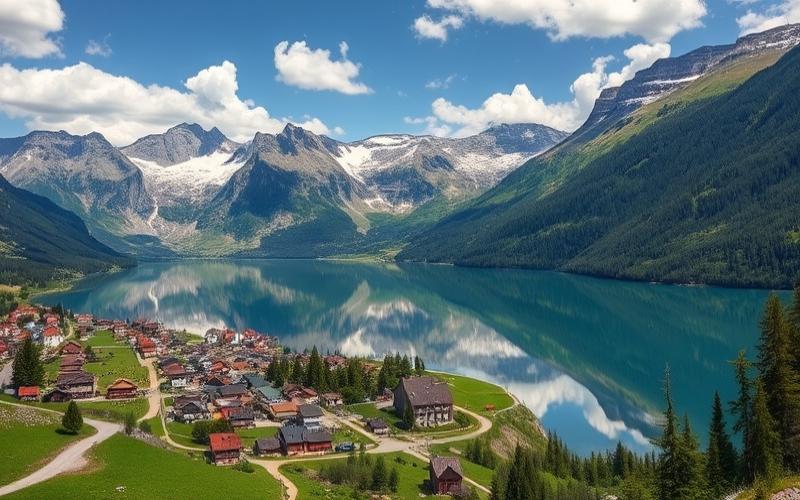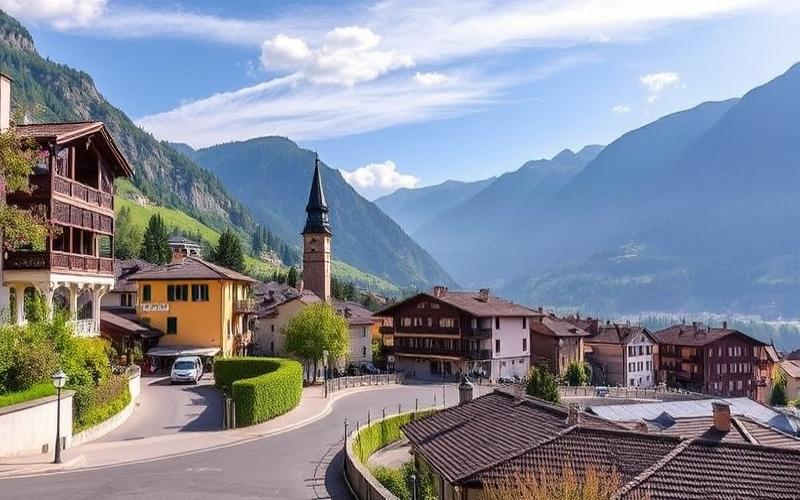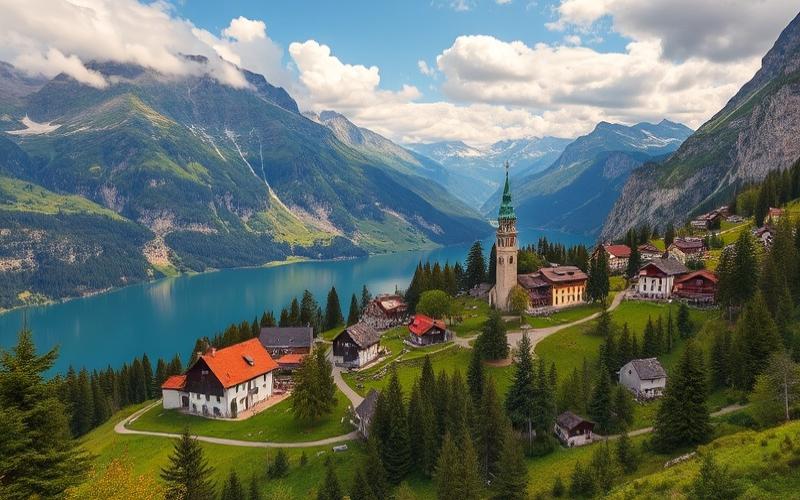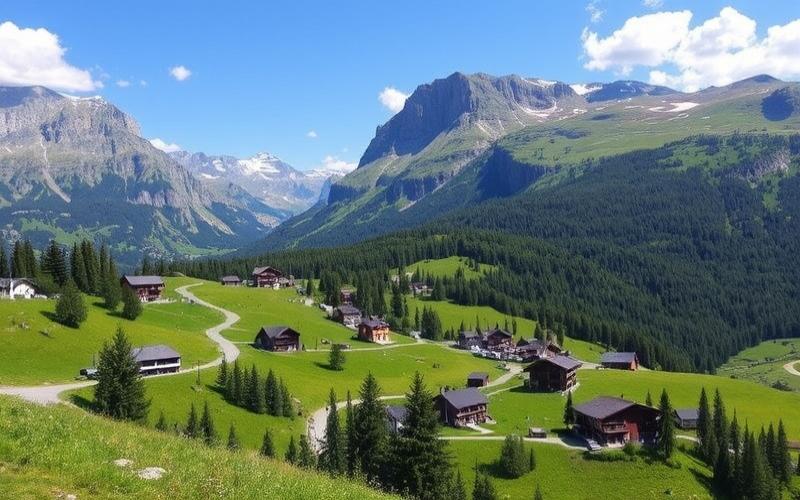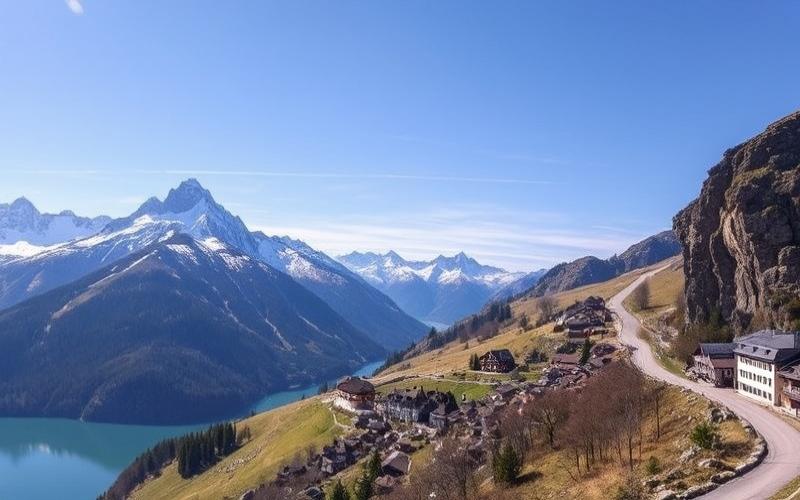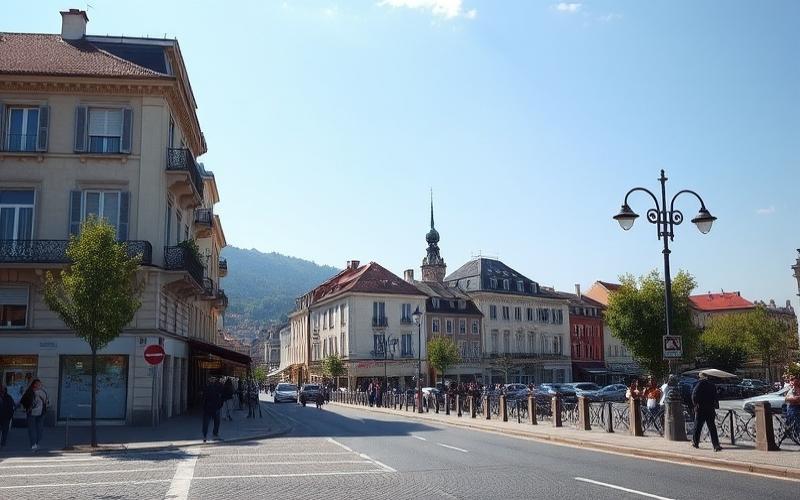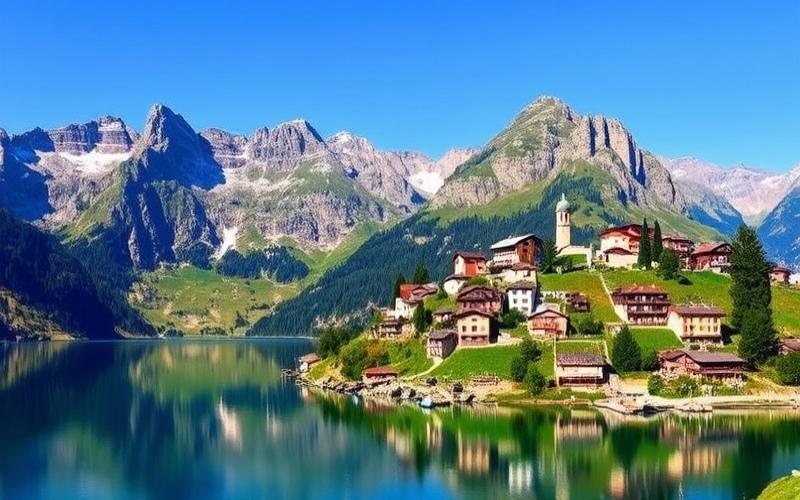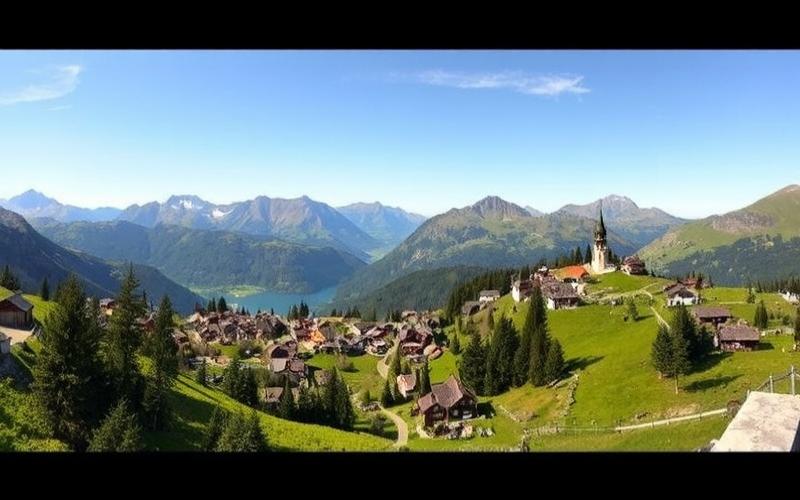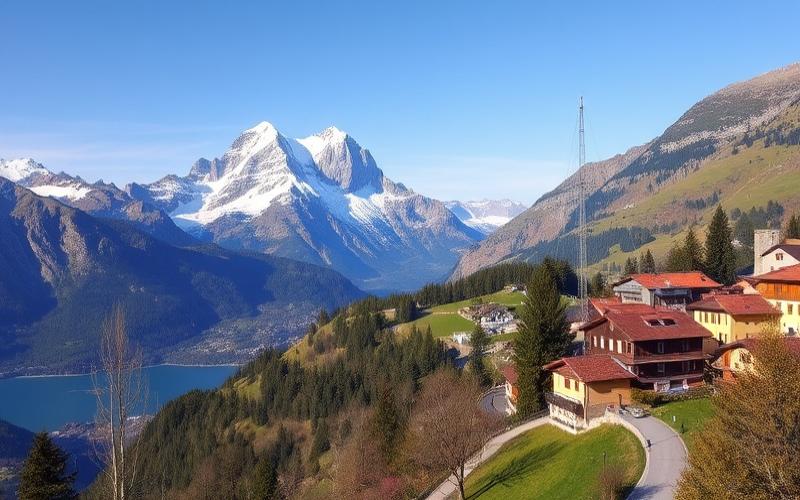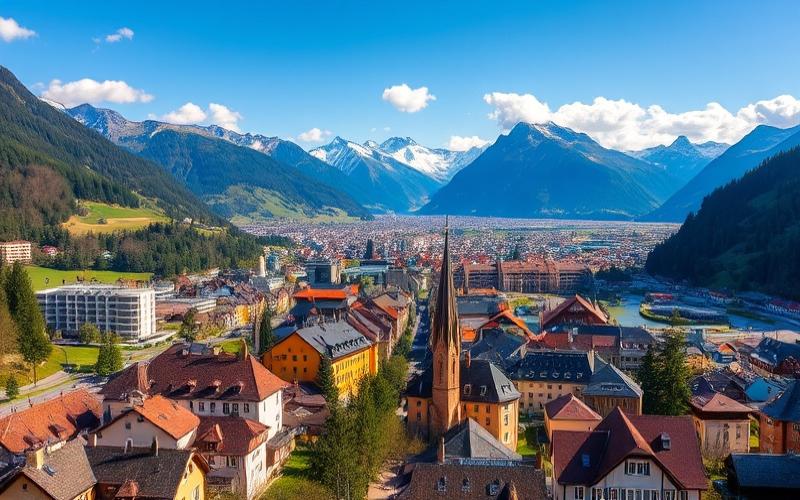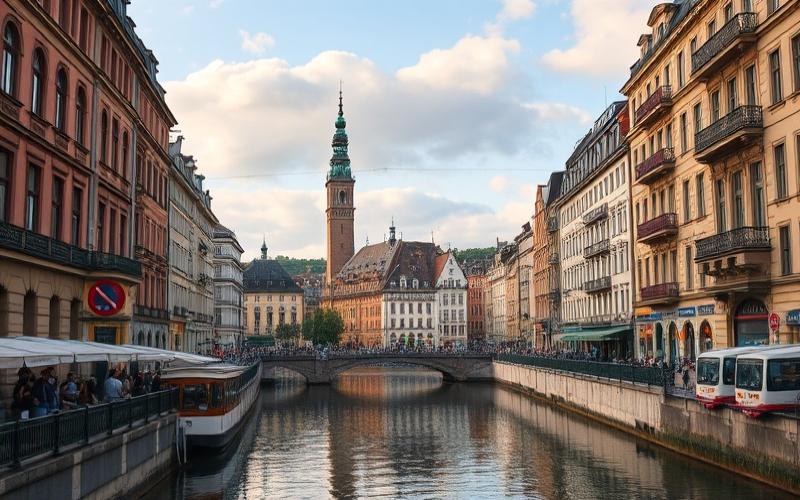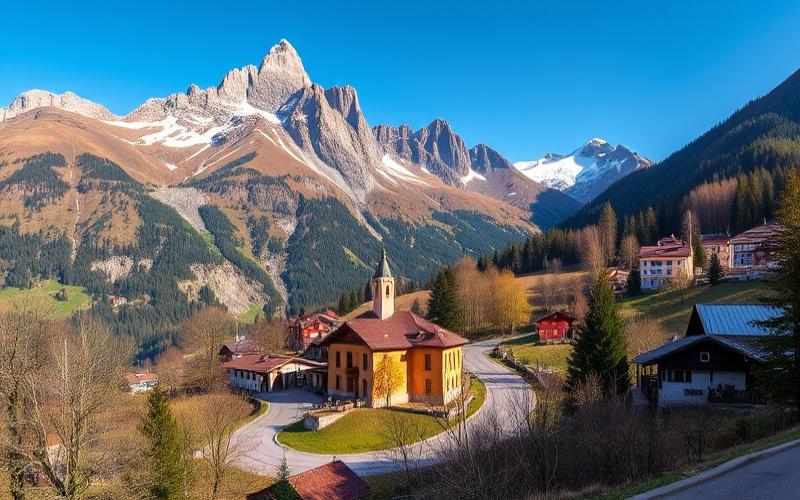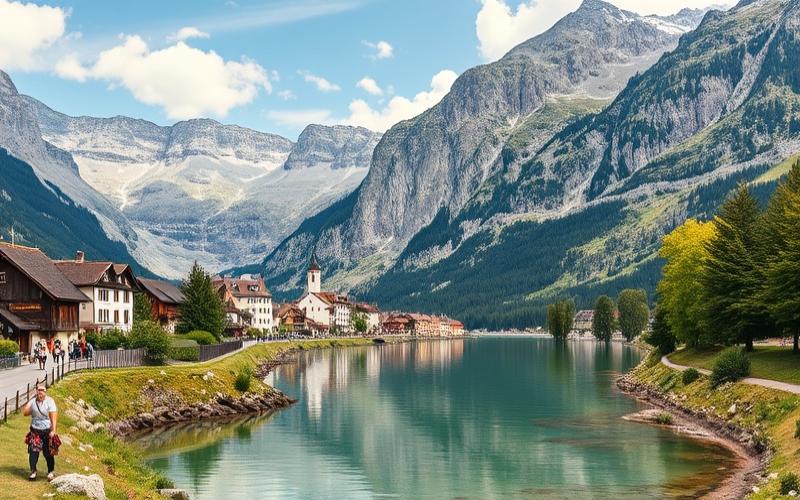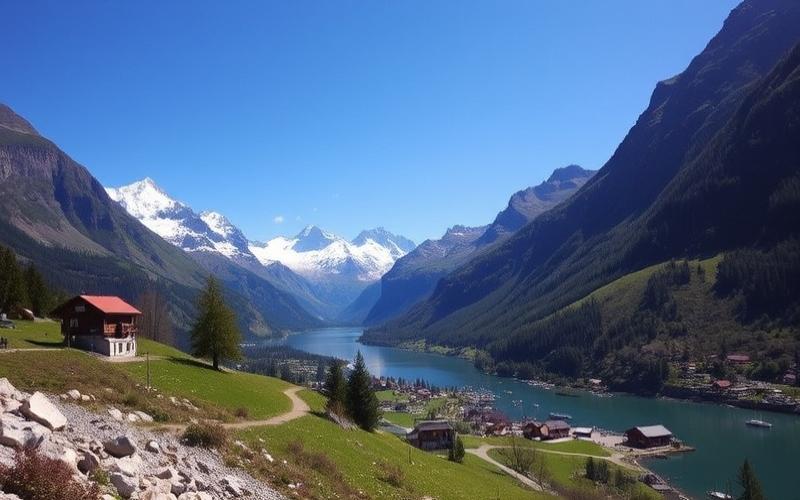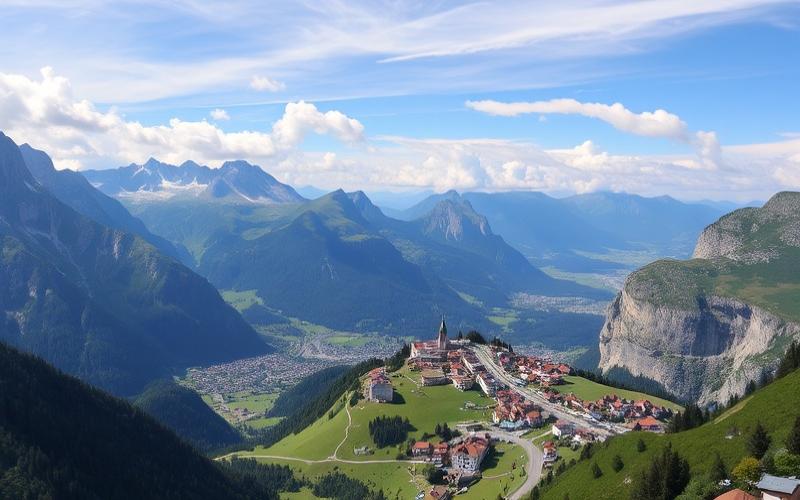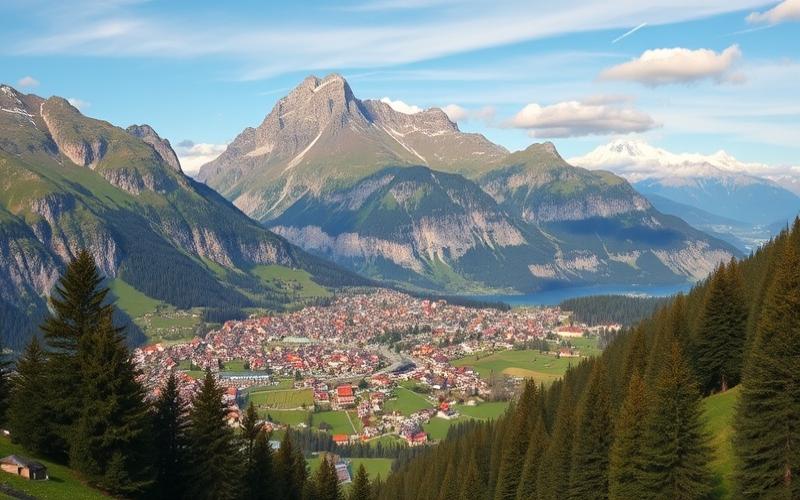
 Published on and written by Cyril Jarnias
Published on and written by Cyril Jarnias
Green Real Estate in Switzerland: An Environmental Priority
In a world increasingly aware of environmental challenges, green real estate is becoming a crucial priority, particularly in Switzerland, a country renowned for its ecological commitment. While the building sector represents a significant portion of carbon emissions, the implementation of new ecological standards and ambitious subsidies for 2025 illustrates Switzerland’s commitment to transforming this vital sector.
Regulatory Requirements and Financial Opportunities
This article will decode upcoming regulatory requirements and the financial opportunities available to support this transition. Discover how these measures, combining innovation and sustainability, aim to enhance construction energy efficiency, and how they fit into the current Swiss architectural landscape.
A Roadmap for Property Owners and Investors
These new standards provide property owners and investors with a roadmap toward sustainable construction practices.
Good to Know:
Switzerland plans significant subsidies for real estate projects meeting ecological standards starting in 2025.
New Standards for Green Real Estate in Switzerland
The Swiss government introduced ambitious new regulations for ecological buildings in 2025, as part of the Climate and Innovation Act. These measures align with the national goal of achieving a carbon-neutral real estate portfolio by 2050.
Specific Requirements for New Green Constructions:
- Compliance with strict CO₂ emission limits:
- Maximum 13 kg CO₂e/m² for single-family homes
- Maximum 12 kg CO₂e/m² for multi-unit buildings
- Mandatory use of low environmental impact materials (reduction of embodied energy)
- Strengthened thermal insulation standards and increased energy efficiency
- Mandatory or strongly incentivized integration of renewable technologies:
- High-temperature heat pumps
- Photovoltaic or solar thermal systems
- Connection to renewable heating networks
Mandatory or Recommended Standards and Certifications:
| Certification/Standard | Requirement | Application |
|---|---|---|
| Minergie-P-ECO | Minimum required standard | New buildings (e.g., Canton of Vaud) |
| MoPEC 2025 | Harmonized cantonal energy prescriptions | National/cantonal |
Some cities like Basel-City also plan an incentive tax aimed at limiting construction with highly CO₂-emitting materials, as well as premature demolition of still usable buildings.
Environmental Goals Targeted by These Standards:
- Reduce the building sector’s energy consumption
- Achieve an overall reduction in national carbon equivalent emissions (-50% by 2030)
- Promote circular economy in the real estate sector (reuse, recycling, carbon storage in certain materials)
Practical Examples and Recent Case Studies:
“Les Vergers” Neighborhood (Geneva)
This pilot project obtained Minergie-P-ECO certification through:
- Predominant use of certified Swiss wood (PEFC/FSC)
- Widespread installation of heat pumps coupled with solar thermal systems
- Green roofs promoting local biodiversity
This neighborhood now shows a carbon footprint below the thresholds set by MoPEC 2025.
“Green Basel” Multi-Unit Building
Basel-City is experimenting here with a combined system:
- Maximum utilization of recycled concrete containing stored CO₂
- Automated smart management of electricity consumption via IoT sensors
The building already anticipates the limits set by the future cantonal tax on embodied emissions.
Key Takeaway
All new constructions must now integrate these requirements or risk non-compliance. Property developers are financially incentivized through public subsidies when they exceed the legal minimum.
The rapid and widespread adoption of Minergie-P-ECO standards becomes essential for any ecological real estate initiative starting in 2025.
Good to Know:
In 2025, Switzerland implemented new regulations for ecological constructions, requiring building energy efficiency with substantial carbon emission reductions and 50% lower energy consumption compared to previous standards. New constructions must incorporate sustainable materials like certified wood and recycled concrete, and integrate renewable technologies such as solar panels and rainwater management systems. To comply, projects can obtain Minergie certification, attesting to their energy performance and sustainability. Among illustrative examples, the “Eco-Résidence” residential building project in Lausanne uses green facades and high thermal insulation, achieving a positive energy balance. These standards aim to support Swiss carbon neutrality goals by 2050, making the real estate sector more environmentally friendly.
Eco-Construction in Switzerland: Best Practices
Eco-construction in Switzerland relies on a combination of practices aimed at minimizing buildings’ environmental footprint throughout their lifecycle. The most common strategies include:
- Increased use of sustainable and local materials, such as certified Swiss wood, regional natural stone, or low-carbon concrete.
- Systematic implementation of life cycle assessment tools to evaluate the environmental impact of construction elements from the design phase.
- Widespread adoption of Minergie standards (Minergie, Minergie-P, Minergie-A), which require excellent thermal insulation, strict control of thermal bridges, and mechanical ventilation with heat recovery.
| Dominant Practice | Description | Concrete Examples |
|---|---|---|
| Bio-based/Sustainable Materials | Certified Swiss wood, recycled concrete, or raw earth | “Tour C” Building in Lausanne |
| Eco-Energy Systems | Geothermal/air-source heat pumps; renewable heating networks | “Erlenmatt” Neighborhood in Basel |
| Green Roofs | Promote urban biodiversity and improve insulation | EPFL Campus |
| Renewable Energy | Integration of photovoltaic/solar thermal; local recovery and valorization of waste heat | “Minergie-A” Administrative Buildings Zurich |
Recent innovations in the sector are largely influenced by MoPEC 2025 (Model of Cantonal Energy Prescriptions), whose main objectives are:
- Significantly improve energy efficiency through progressive strengthening of thermal insulation requirements.
- Accelerate the transition to thermal networks powered by local renewable energy (biomass, geothermal).
- Drastically reduce emissions related to building energy systems.
These developments also benefit from the 2024–2025 federal support program that financially supports both renovation and technical innovation in the residential and tertiary sectors.
Notable examples complying with these standards:
- Tour C Building (Lausanne): Hybrid wood-concrete construction certified Minergie-P-ECO.
- Erlenmatt-Ost Neighborhood (Basel): Residential complex labeled Minergie-A with collective solar self-consumption.
Significant innovations for 2025:
- Smart grids integrating decentralized photovoltaic production
- Active facades combining high-performance insulation and solar panels
- Modular prefabricated solutions reducing waste and construction time
Major challenges encountered:
- Initial cost overrun linked to high-performance technologies or bio-based materials
- Administrative complexity related to combining cantonal/federal aids/subsidies
- Occasional shortage of craftsmen specifically trained in advanced ecological techniques
Sector responses provided:
- Specific continuing education offered by Ecobau/HES-SO to raise awareness among architects & engineers;
- Strengthened cooperation between public/private developers to share costs & feedback;
- Accelerated development of reliable indicators to rigorously assess life cycle assessments & actual impacts from the design phase.
Good to Know:
In Switzerland, eco-construction integrates practices such as using sustainable materials like local wood and eco-energy systems that optimize consumption through solar and geothermal technologies. Green roofs are commonly adopted to improve thermal insulation and manage stormwater. Buildings like the Zurich Cantonal Bank headquarters have obtained Minergie certification, ensuring low energy consumption. Minergie standards, strengthened by subsidies planned for 2025, encourage innovation, particularly in integrating smart systems to maximize energy efficiency. However, high initial costs and the need to train qualified professionals pose notable challenges, which sector players address by offering collaborative solutions and investing in continuous training.
Swiss Subsidies for Renewable Energy
Swiss subsidies for renewable energy in green real estate in 2025 are based on federal, cantonal, and local programs, supporting the installation of solar, wind, or geothermal systems in residential and commercial properties. The Confederation strengthened these measures following the legislative revision effective early 2025.
Main Programs and Tax Incentives
- Floating Market Premium (FMP): Complementary financial support indexed to market fluctuations for renewable electricity production (photovoltaic, biomass, wind, and hydro).
- Investment Contribution (IC): Direct aid for purchasing or renovating installations using renewable energy.
- Buildings Program: Co-financing to improve overall energy efficiency of existing buildings through insulation, replacement of fossil heating with heat pumps or solar thermal systems.
- Tax Incentives: Possible deductions for investments related to renewable energy installations on annual tax returns.
| Instrument | Technologies Covered | Property Types | Amount/Benefit |
| Floating Market Premium | Solar PV, Wind, Biomass | Residential/Commercial | Market-dependent |
| Investment Contribution | Solar PV/Thermal/Geothermal/Wind | Residential/Commercial | Lump sum/proportional |
| Buildings Program | Insulation + Renewables | Primarily existing | Project-dependent |
| Tax Deduction | All | All | Investment-dependent |
Eligibility
- Private or institutional property owners
- Real estate cooperatives
- Real estate developers
- Local authorities
Main criteria are:
- Compliance with required technical standards
- Installation of equipment certified by Swissolar or equivalent
- Project must be located in Switzerland and aim for measurable carbon footprint improvement
Application Process
- Preliminary verification via dedicated cantonal/federal platforms (example: Pronovo)
- Submission of complete file before work begins: detailed quote, technical plans validated by accredited professional
- Technical and environmental assessment according to official grid; consideration of expected energy performance and architectural integration
- Grant notification then payment after final post-work verification
Typical Evaluation Criteria
- Integrated technological innovation
- Potential impact on effective CO₂ emission reduction
- Consistency with Cantonal/Local Climate Plan
- Architectural quality
Concrete Examples
A new multi-unit building in Lausanne equipped with photovoltaic panels coupled with a geothermal heat pump simultaneously benefited from:
- A one-time federal contribution covering up to 25% of total solar cost,
- Specific local “exemplary buildings” bonuses,
- And partial tax relief for complete fossil system replacement.
Another example: a Geneva commercial park that installed a rooftop micro-wind turbine received a specific premium linked to the cantonal energy innovation program as well as federal IC support.
National Carbon Goals & Role of Subsidies
Switzerland aims for a minimum –30% CO₂ emissions from the built sector between 1990 and end of 2025 through massive deployment of green technologies in both new and renovated real estate. These financial instruments not only accelerate this transition but also favor local industrial development around solar/geothermal sectors while contributing to Swiss global climate goals.
These subsidies thus constitute a central lever toward a more sustainable, innovative, and competitive Swiss real estate sector starting today.
Good to Know:
In Switzerland, various subsidies encourage the adoption of renewable energy in green real estate, with government programs like SuisseEnergie offering significant incentives for installing solar, wind, and geothermal systems. Property owners and developers can benefit from tax relief and direct subsidies, with eligibility assessed based on rigorous criteria for carbon footprint reduction and building sustainability, with clearly defined application processes. The success of projects such as solar panel installations in Zurich demonstrates the effectiveness of these aids, contributing to national emission reduction goals of 50% by 2030, while stimulating sustainable construction. These initiatives align with Switzerland’s commitment to strengthening the energy transition and promoting environmentally friendly practices in the real estate sector.
BREEAM Certification: A Label for the Future
BREEAM certification plays a central role in the sustainable development of Switzerland’s real estate sector, establishing itself as a reference label for high environmental performance buildings. Its growing adoption reflects evolving regulatory and societal expectations for eco-construction in 2025 and beyond.
BREEAM Assessment Criteria and Contribution to Environmental Impact Reduction:
- Energy Performance
- Effective Water Management
- Reduction of Greenhouse Gas Emissions
- Indoor Air Quality
- Use of Sustainable and Responsible Materials
- Optimized Waste Management
These criteria are evaluated by accredited assessors during a rigorous process that includes design, construction, and final on-site verification. Each project receives an overall score assigning the label level (from “Pass” to “Outstanding”). This approach directly promotes the reduction of buildings’ ecological footprint throughout their lifecycle.
Growing Importance in the Swiss Context:
Swiss standards are evolving toward increased energy efficiency requirements, particularly with climate goals set for 2050. In this context, BREEAM usefully complements local labels such as Minergie or SNBS. Its multidimensional approach allows Swiss real estate players not only to anticipate future regulations but also to internationalize their assets through global recognition.
Economic and Environmental Benefits for Developers/Investors:
- Significant reduction in operational costs (energy, water)
- Increased real estate portfolio value on the market (better resale or rental attractiveness)
- Facilitated access to government subsidies dedicated to ecological constructions
- Reduction of future regulatory risks through early compliance with high standards
By opting for BREEAM, developers and investors demonstrate their responsible commitment while concretely benefiting:
| Benefit | Economic Impact | Environmental Impact |
| Energy Savings | Reduced bills | Lower CO₂ emissions |
| Increased Attractiveness | Higher rental value | Resource preservation |
| Access to Subsidies | Facilitated financing | Technical innovation |
Encouragement Through Government Subsidies:
Obtaining the label often facilitates access to public aid aimed at supporting sustainable initiatives—whether tax incentives or direct subsidies—thus further encouraging real estate developers to prioritize this type of certification in their future projects.
Comparison with Other Common Ecological Certifications in Switzerland:
| Certification | Origin | Strengths | International Recognition |
| Minergie | Switzerland | High energy efficiency | Low outside Switzerland |
| SNBS | Switzerland | Holistic Swiss approach | Primarily limited to CH territory |
| LEED | United States | Global notoriety | Strong |
| DGNB | Germany | Detailed life cycle analysis | Growing |
| BREEAM | UK | Multicriteria versatility + flexibility | Very strong |
BREEAM stands out for its flexible methodology applicable to new, renovated, or existing buildings—covering all usage types—as well as its growing international weight among global investors. This positions the label as a preferred choice facing the global challenges that the Swiss real estate sector must address today.
BREEAM certification thus embodies a bridge between local excellence and international requirements while accelerating the transition toward a real estate portfolio resilient to future climate challenges.
Good to Know:
BREEAM certification plays a crucial role in the sustainable development of Swiss real estate, aligning its assessment criteria with key aspects like energy efficiency, water management, and environmental impact of materials used. These criteria, consistent with Swiss ecological construction standards planned for 2025, help reduce buildings’ ecological footprint. For developers and investors, BREEAM offers economic benefits, including increased value of certified properties and potential access to government subsidies encouraging ecological practices. Compared to other certifications like MINERGIE or LEED, BREEAM is particularly attractive for its international flexibility and ability to adapt to local specificities, which could make it a preferred choice in the Swiss context and beyond.
Disclaimer: The information provided on this website is for informational purposes only and does not constitute financial, legal, or professional advice. We encourage you to consult qualified experts before making any investment, real estate, or expatriation decisions. Although we strive to maintain up-to-date and accurate information, we do not guarantee the completeness, accuracy, or timeliness of the proposed content. As investment and expatriation involve risks, we disclaim any liability for potential losses or damages arising from the use of this site. Your use of this site confirms your acceptance of these terms and your understanding of the associated risks.

